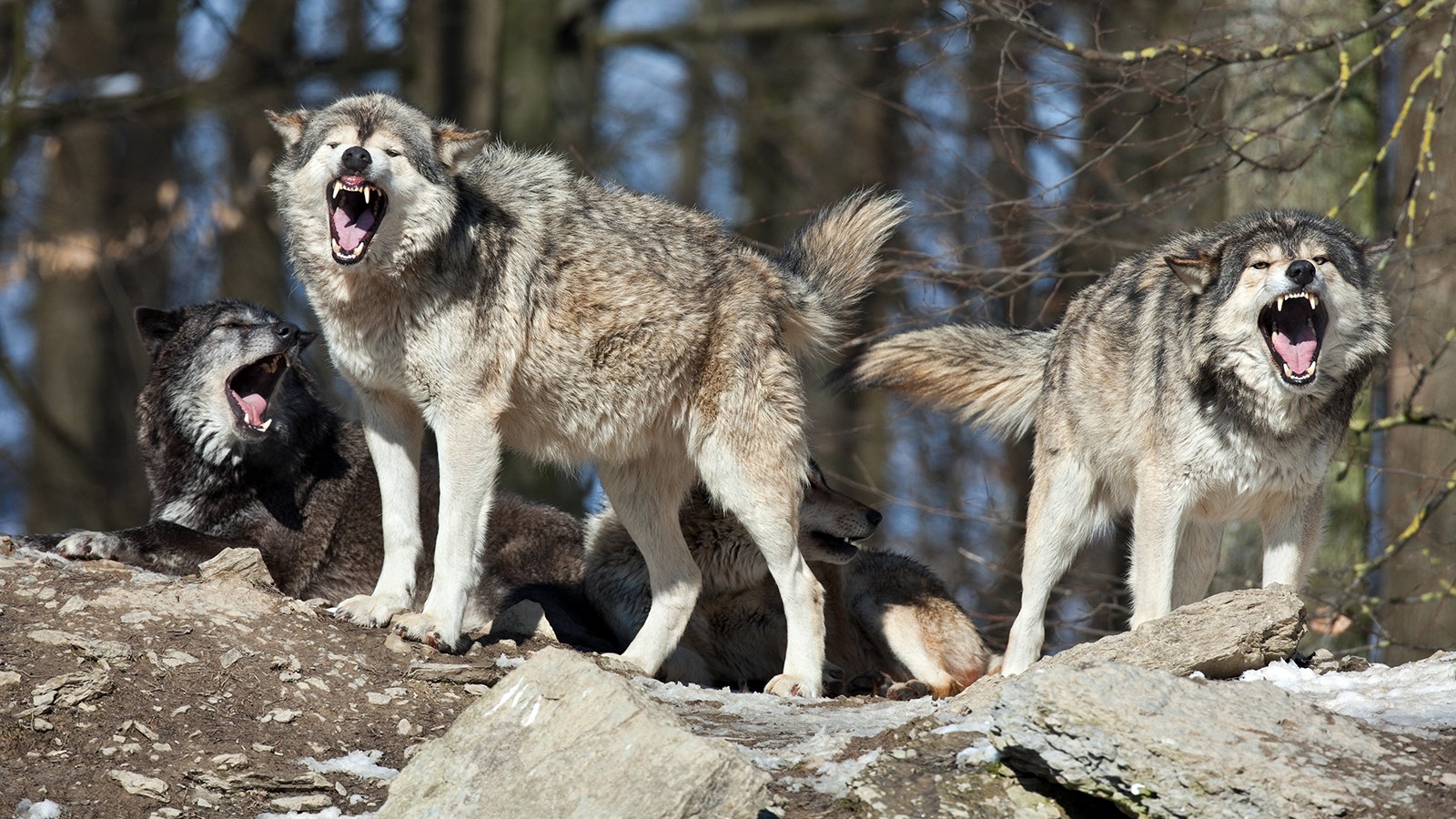Numerous federal lawmakers, including Wyoming Republican Congresswoman Harriet Hageman, are backing a push to get wolves delisted from federal protection across the Lower 48.
How that could change the dynamics of wolf management along the Colorado-Wyoming state line remains unclear.
A hunting and ranching supporter and a wolf conservation advocate from Colorado both expressed frustration over the current patchwork approach to managing wolves across the country.
H.R. 845, the Pet and Livestock Protection Act, was introduced this year by Colorado Republican Rep. Lauren Boebert. Hageman is among the bill’s co-sponsors.
It calls for removing threatened and endangered species for gray wolves across the Lower 48. Mexican gray wolves, a smaller subspecies now recovering in the Southwestern U.S., would likely remain under protection.
Congresswomen Want Wolves Deslisted
Wolves should have been delisted across the Lower 48 in 2020 Hageman stated in an email to Cowboy State Daily on Thursday.
“The Pet and Livestock Protection Act codifies a 2020 decision by President Trump’s Administration to delist the gray wolf, which was wrongly overturned by a California-based activist judge in 2022, Hageman said.
“This legislation allows states to manage these apex predators through the same science-based, locally driven decision-making that saved the species in the first place and protects farms and rural communities from outdated wildlife management policies. The gray wolf is recovered by any definition, and it is time we take a victory lap on the Endangered Species Act and delist the gray wolf.”
During a hearing Tuesday before the U.S. House Natural Resources Subcommittee on Water, Wildlife and Fisheries, Boebert said that Colorado’s wolf reintroduction program had been voted in by metropolitan voters “in Boulder and Denver”.
She added that the wolf reintroduction panders to “extreme environmentalists who don’t understand our rural way of life.”
Open Season On Colorado Wolves?
Even if H.R. 845 passes, it’s not likely that Colorado would turn into a free-fire zone for wolves, as is the case in much of Wyoming, Grand County, Colorado, resident Samantha Miller told Cowboy State Daily.
Colorado wolves would probably remain protected by the state under a 10(j) designation as a nonessential, experimental population, said Miller, the senior carnivore campaigner with the Center of Biological Diversity.
“Wolves here would still be protected at the state level,” she said.
However, from a wolf conservation and recovery standpoint, delisting them across the country could hurt “wolf immigration” between states, hampering the species’ genetic diversity, she said.
Wolves are under state management and may be hunted in Wyoming, Montana and Idaho.
In about 85% of Wyoming – including all along the state line with Colorado – wolves may be shot on sight at any time, with no hunting license required.

Trek Into Wyoming Gets Colorado Wolf Killed
Moving across state has gotten at least one reintroduced Colorado wolf killed.
Colorado first reintroduced 10 gray wolves brought in from Oregon in December 2023. In January, Colorado Parks and Wildlife (CPW) released 15 more wolves, flown in from British Columbia, Canada.
One of the wolves from British Columbia traveled into Wyoming. On March 15, that wolf was killed by federal Wildlife Services agents after it killed five sheep in north-central Wyoming.
Wolves are on the move across state lines in other parts of the country, Miller said. Including pushing out from Oregon, and from the Great Lakes region.
If protections are removed across the Lower 48, that could throw the broader wolf recovery effort into chaos, she said.
Will Ranchers Know Which Wolves To Shoot?
The current patchwork of wolves being protected in some places, but not others, could also make things difficult for ranchers, Colorado resident John Michael Williams, who runs the Colorado Wolf Tracker Facebook page, told Cowboy State Daily.
Under current state policy, Colorado ranchers can shoot any wolves they catch actively attacking their livestock.
However, in parts of Colorado, that could get complicated, because of wolves coming in from other states.
People in southern Colorado have reported seeing Mexican gray wolves, he said. And last year, a wolf that had apparently traveled all the way from the Great Lakes population was trapped in Colorado.
Because Mexican gray wolves and Great Lakes wolves are still under federal protection, a Colorado rancher might get into trouble for mistakenly shooting one of them, Williams said.
“Charges could be brought against the person who shot one of those wolves” he said.
Like Miller, Williams said he doesn’t anticipate a drastic change in Colorado’s wolf policy if H.R. 845 passes.
However, it could at least relieve ranchers of the worry about possibly shooting a Great Lakes wolf by accident, even if Mexican gray wolves remained protected, he said.
Was Colorado Wolf Reintroduction A Mistake?
Feelings remain mixed over Colorado’s wolf reintroduction, Miller and Williams said.
“A lot of people on Colorado’s western slope – hunters, ranchers and outdoor recreationists – think that reintroducing them was a mistake,” Williams said.
He’s originally from Wisconsin. And if nationwide wolf delisting goes through, that state will likely open a wolf hunting season, which he favors.
Miller said that from a biodiversity and big-picture conservation standpoint, bringing wolves back was the right thing to do.
Chronic wasting disease (CWD) infections in Wyoming elk have become a concern.
Colorado – which has more elk than any other state – has been “ground zero for CWD,” Miller said.
Wolves can detect CWD in prey animals such as deer and elk even before those animals show any sign of sickness, she said.
And wolves preying on CWD-infected animals will help curb the spread of the disease, she said.
She added that though some have criticized Colorado’s wolf reintroduction as “ballot box biology,” she things Boebert’s bill is “ballot-box biology at its finest.”
Mark Heinz can be reached at mark@cowboystatedaily.com.





